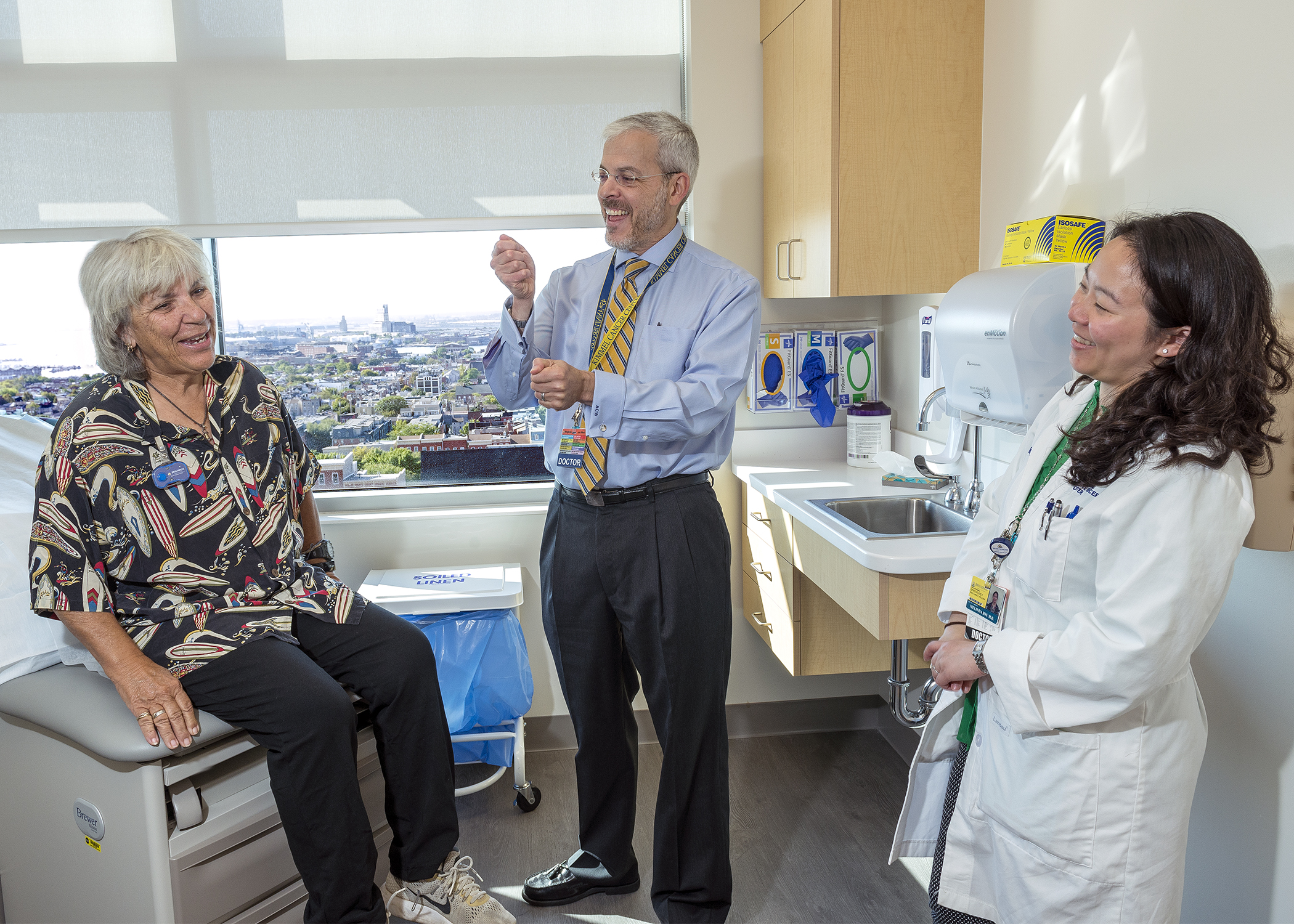As our knowledge of breast cancer has grown, so have the number of therapy modalities and protocols used to treat this disease, from combinations of chemotherapy to targeted treatments that attack malignant cells carrying specific genetic variations.
Overall, these developments have been positive, offering patients more and better options to fight their cancers, says breast cancer expert Antonio Wolff, M.D. However, he says, they’ve also boosted the potential to give some patients more treatment than needed and, on occasion, negatively impact the quality of their survivorship.
Wolff notes that studies over the past several decades have shown benefits from combination therapies, but doing more not always leads to noticeable improvements in outcomes.
“It’s like protecting a house,” Wolff explains. “First you’ll put on a single lock, but then you might add a second or a third. You could argue that you’ll be safer with each additional device, just like you might do better with each additional cancer therapy. But the incremental benefit of each addition might not be worth it in terms of toxicity and meaningful improvements in survival.”
A key first step after a diagnosis of breast cancer is for the pathologist to most accurately identify the specific subtype of the disease affecting a patient. Special biomarker tests, like measures for the estrogen and HER2 receptors in a tumor, give the oncologist information needed to recommend the best treatment regimen for an individual patient. These treatments can include anti-estrogens (hormone therapies), chemotherapies, and antibody medications, given alone or in combination.
As treatments improve and more patients survive their breast cancer diagnosis, doctors began to recognize less frequent but still serious long-term complications. For instance, some chemotherapies can increase the risk of heart failure in the long-run. Others risk damaging normal blood stem cells in the bone marrow.
In the February 2015 issue of Journal of Clinical Oncology, Wolff and colleagues showed that the risk of genetic glitches in the bone marrow that can lead to leukemias after standard adjuvant chemotherapy drugs like anthracyclines and cyclophosphamide, while still very small, was twice as high as previously known.
“You really want to be as certain as you can that the likelihood of benefit will be greater than the small risk of complications, so patients don’t suffer from our good intentions,” Wolff says.
That’s why he and his colleagues are investigating ways that patients can get more from less by using more targeted treatments, changing the way that treatments are administered, or even carefully stratifying patients to determine who might be able to avoid certain treatments altogether.
In October 2016, Wolff and colleagues at Johns Hopkins and elsewhere published a study in Journal of Clinical Oncology detailing a tool that helps assess the risk of breast cancer recurrence—a factor that can trigger additional treatment with chemotherapy in patients with estrogen receptor-positive disease—by using standard measures easily available from high-quality pathology reports.
The team developed a free online app available to any oncologist, called the Breast Cancer Recurrence Score Estimator, that can help doctors and their patients decide on the need for additional tumor tests and on when to consider using adjuvant chemotherapy before the start of endocrine therapy.
Wolff also helped organize a separate study through the Translational Breast Cancer Research Consortium that his Hopkins colleagues Roisin Connolly, M.B.B.Ch., and Vered Stearns, M.D., reported in 2019 in the Journal of Clinical Oncology. In that study, called TBCRC 026, they showed that an imaging test in tumor—after a single dose of HER-2 targeted therapies given soon after diagnosis and before surgery— helps predict which patients might have a pathologically complete response with no residual cancer found at surgery.
These findings have now allowed Wolff and colleagues to develop a larger study in the U.S. and Canada, funded by the National Cancer Institute, to test if some of these patients could essentially avoid most exposure to chemotherapy and primarily be treated with targeted therapy against the estrogen and HER2 receptors.
These studies begin in the clinical research setting and, if proven, will influence standard care.
“Although it’s critical to develop better treatments, we do not always need to treat patients with more therapies. Rather, we need to better make use of the treatments we have and be smarter when assessing the benefits offered by new treatments,” Wolff says. “This is the essence of Personalized Medicine.”
